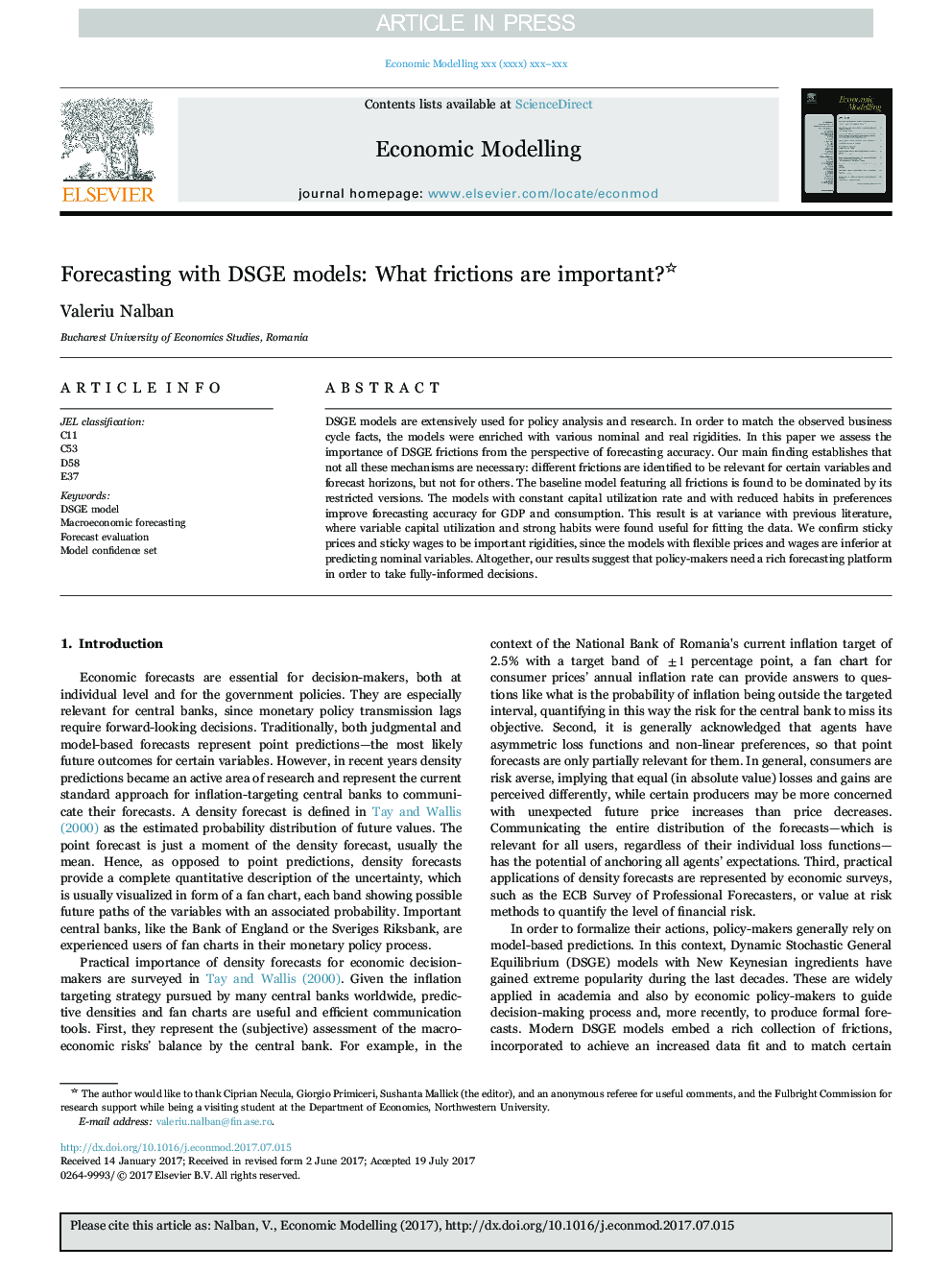| Article ID | Journal | Published Year | Pages | File Type |
|---|---|---|---|---|
| 7347583 | Economic Modelling | 2018 | 15 Pages |
Abstract
DSGE models are extensively used for policy analysis and research. In order to match the observed business cycle facts, the models were enriched with various nominal and real rigidities. In this paper we assess the importance of DSGE frictions from the perspective of forecasting accuracy. Our main finding establishes that not all these mechanisms are necessary: different frictions are identified to be relevant for certain variables and forecast horizons, but not for others. The baseline model featuring all frictions is found to be dominated by its restricted versions. The models with constant capital utilization rate and with reduced habits in preferences improve forecasting accuracy for GDP and consumption. This result is at variance with previous literature, where variable capital utilization and strong habits were found useful for fitting the data. We confirm sticky prices and sticky wages to be important rigidities, since the models with flexible prices and wages are inferior at predicting nominal variables. Altogether, our results suggest that policy-makers need a rich forecasting platform in order to take fully-informed decisions.
Related Topics
Social Sciences and Humanities
Economics, Econometrics and Finance
Economics and Econometrics
Authors
Valeriu Nalban,
